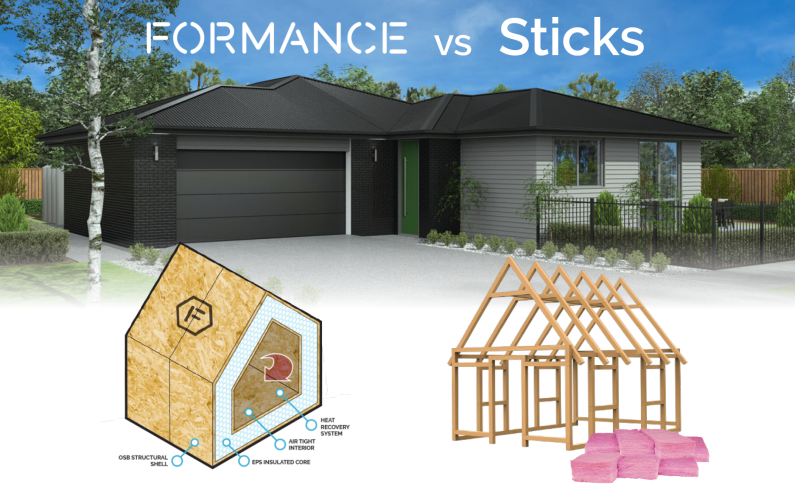Building Energy Efficient homes in NZ, the breakdown: SIPs vs Sticks - Formance

Energy Efficient Homes in New Zealand are becoming increasingly considered by homeowners, builders and architects. And rightly so, because New Zealanders are spending over 34% of their power bill on space heating, due to so much of the warmth being lost through the walls and ceiling.
We decided it was time to see how Formance SIPs (Structural Insulated Panels) played out in terms of energy efficiency when competing with the most traditional type of construction - Traditional Framing with Fibreglass insulation.
To determine the difference, we had an Energy Modelling Professional to accurately assess a 168m2 home in three different climate zones in New Zealand using the PHPP (Passive House Planning Package) model.
Here are the three climate zones the house was modelled in.
- Auckland
- Wellington
- Christchurch
How does PHPP/Thermal Modelling work?
The Passive House Planning Package calculates the annual energy demand (heating & cooling requirements) of the building based on building characteristics and the climate. The annual energy demand is measured in kWh/m2a (kilowatt-hours per square meter per year).
A breakdown of the two construction methods we compared:
Traditional Timber Framing with Fibreglass Insulation
- 90mm Timber Framing
- Fibreglass Wall and Ceiling Insulation
- Plasterboard/GIB
- Concrete Raft Style Slab
- Double Glazed Aluminium Windows
Formance
- Formance 115mm Walls
- Formance 165mm Ceilings
- Plasterboard/GIB
- Concrete Raft Style Slab
- Double Glazed Aluminium Windows
The results:
In all three climate zones, Formance proved 60% more energy-efficient than timber framing with fiberglass insulation.
This percentage is based on the total energy demand calculation from PHPP Modelling, compared to the current minimum standard in NZBC.
60% can be taken a step further by increasing the thickness of Formance Panels or choosing to upgrade EPS to graphite-infused EPS.
Determining energy use for your project
We're aware you may be after further information about the performance of the Formance system if you're considering building an energy-efficient home. That's why we've got all the information you need to ensure your project will be a warmer, drier, and healthier home with significantly lower running costs.
If you are looking to take energy efficiency to the next level with Passive House, we are happy to help with recommendations. You may also find our Technical Bulletin, Passive Houses with Formance SIPs useful.
Start a discussion with us about energy efficiency on your project.
Click here to contact us.
*Please note that the images used are only indicative of the envelope and are not accurate or to scale.






